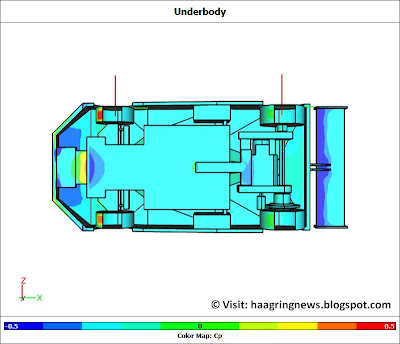The chart below shows the overall results for a CFD "virtual wind tunnel" simulation of a Mini-Z MR03 Mazda 787b 3D model, "racing" at 10 m/s (36 km/h).
Each data point on the chart corresponds to a different rear wing configuration:
no rear wing, flat rear wing, 15 degree rear wing,
30 degree rear wing,
45 degree rear wing,
60 degree rear wing. Also on the chart are the results for a
gurney flap and for a
scoop wing. The drag force for each configuration is shown on the horizontal axis. The vertical axis shows the down force (or lift, for negative values). All forces are shown in gf.
According to the simulation results, there is a clear benefit of using practically any type of wing, even a flat one. This benefit comes from neutralizing the lift effect generated by the body shell itself. The greater the angle of the rear wing, the greater the benefit in terms of down force. This benefit, however, comes at the cost of increased drag.
The results indicate that, for the wing geometries tested, the sweet spot in terms of the drag vs. down force trade off might be close to the 30 degree configuration. Above that, increases in rear wing angle seem to bring only marginal improvements in down force while still increasing drag.
A gurney flap, according to the simulation, might be a good alternative providing a down force between the 15 and 30 degree wings with less drag.
A scoop wing configuration is the clear choice in terms of down force alone but, at the same time, it is the one with the highest drag.
For complete results of the Mini-Z MR-03 CFD "virtual wind tunnel" simulation click
here.




















































